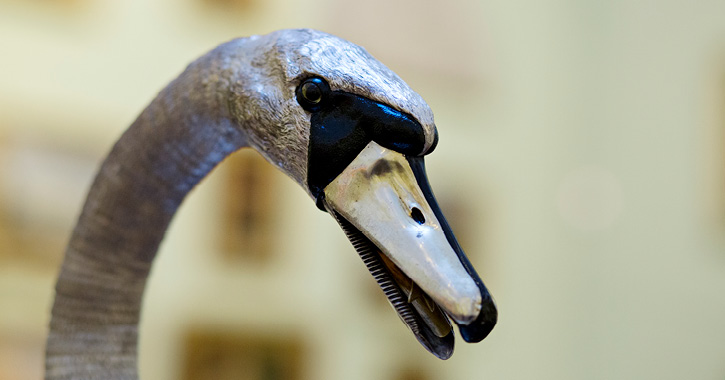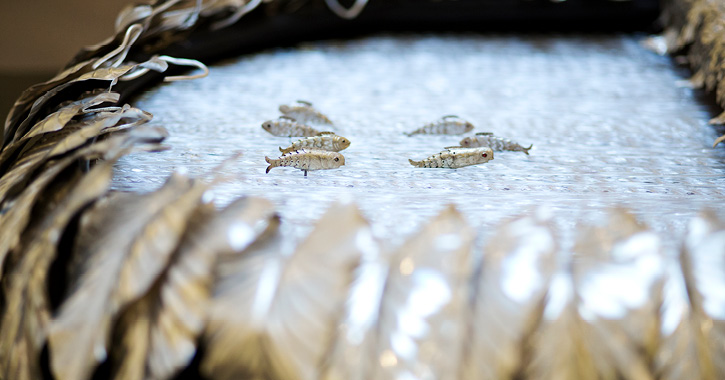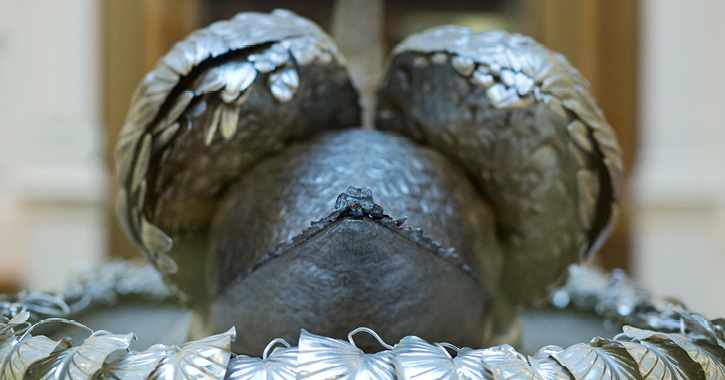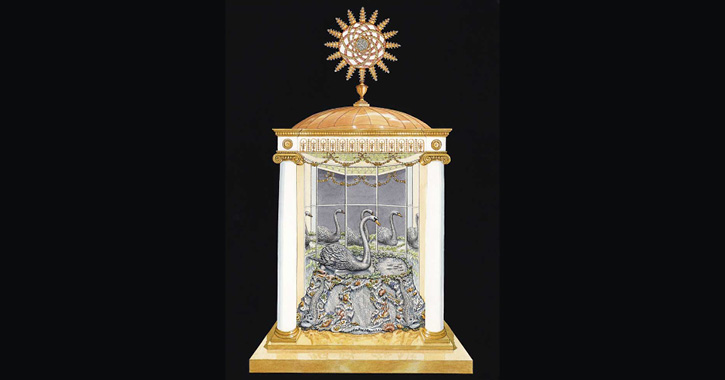The Bowes Museum’s Silver Swan celebrates 250 years since its first performance this year! It is a spectacular artwork, unique in the world, created by two fantastic people: the brilliant inventor John Joseph Merlin and jewellery maker James Cox.
How much do you know about the Silver Swan?
.jpg)
What is the Silver Swan’s gender and breed?
The Silver Swan is based on a life size female mute swan. Mute swans or ‘Cygnus olor’ are native to Europe and Russia and commonly appear in ballets and fairy tales. Just like John and Joséphine Bowes, they are symbol of love as they form long-lasting bonds and will mate for life.
Although it can be difficult to identify the gender of a mute swan, females are generally smaller with a shorter head and narrower wingspan. Also, the black knob at the base of the male’s bill swells during the breeding season. Did you know that they are generally quieter than other breeds of swan, hence their name of ‘mute’?

What would the Silver Swan eat?
Although the Silver Swan performs an enchanting dance of swooping into the water and catching a fish, did you know that swans are primarily vegetarians? Their long necks are perfect for grazing aquatic vegetation and they will happily dine off grassy fields. Occasionally they will eat molluscs, small fish, frogs and worms found hiding in aquatic vegetation.

Where is the Silver Swan’s Hallmark?
The Silver Swan was never hallmarked. Hallmarking usually occurs on precious objects to certify their content of noble metal and as a means for the artist to authenticate their work. Throughout history hallmarks have provided crucial information regarding the creator of objects and the likely date they were made. It is curious as to why the creators of the Silver Swan did not put a hallmark on her. Was it a conscious decision or did they somehow forget?

What did the Silver Swan display originally look like?
The Silver Swan was initially housed in a completely different setting than the one we know today. She had a beautiful canopy, columns and the glass rods were actually sitting in a cask full of water. When played, the glass rods would’ve given a magical illusion of being on a lake.

Image above: Reconstruction based on the advice of John Martin Robinson. Commissioned by Country Life Magazine. © Stephen Conlin. All Rights Reserved. www.pictu.co.uk
Where was the Silver Swan originally destined?
Although the Silver Swan was made in England, being born in a workshop in London, she was not created with the intention of flying north and settling in her forever home in Barnard Castle. One theory is that she was originally made to be exported to the Far East, where automatas were particularly popular.
However, by the time she was ready to be matched with a potential owner, socio-political discontent between the UK and China had resulted in the Chinese Emperor banning trade between the two nations. Instead, the Silver Swan remained in James Cox’s shop, come museum of curiosities. Eventually she found her way to Paris where she met John and Joséphine at the Exhibition or Exposition Universelle [d’art et d’industrie] in 1867 and they fell instantly in love with her.
![Illustration of the silver swan on display at Exposition Universelle [d’art et d’industrie] in Paris, 1867](/dbimgs/Bowes Museum Silver swan6.jpg)
Join The Bowes Museum to admire this extraordinary object and watch a video of its performance. Make use of the annual membership and explore Movement, a year-long celebration inspired by the beautiful automaton.
Related
Comments
Comments are disabled for this post.



 to add an item to your Itinerary basket.
to add an item to your Itinerary basket.
.png)





